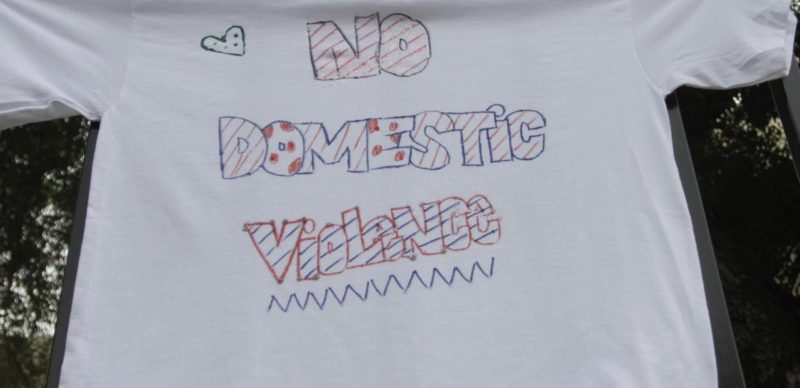
For two years, Armando told no one that he was living with a partner who subjected him to physical, emotional and psychological abuse. In 2007, after a severe fight with his partner landed him in the hospital, he finally had enough.
There, he confessed to a police officer and a social worker that the man who abused him was not his cousin or his roommate — it was his partner, Miguel, who fled the state while Armando was in the hospital.
“Behind closed doors, this man would put his hands on me,” Armando said. “He’d take a gun from a briefcase and use it on my head and hit me with it. It became very frightening.”
After the initial talk in the hospital — and tearful calls to domestic violence specialists at 1-800 hotlines — it took three more years for him to seek in-person professional help and even longer to press charges.
Like other male victims of domestic abuse, Armando faced several roadblocks in the search for support and justice. Traditional ideas of intimate partner violence often focus on male abusers and female victims — the fact that Armando is gay man made access to help even harder.
Others often don’t read violence between same-gender couples as domestic violence. But the stats prove otherwise: Within the LGBTQ population, 44% of lesbians, 61% of bisexual women and 37% of bisexual men experience intimate partner violence, according to the National Coalition of Anti-Violence Programs. Twenty-six percent of gay men experience it within their lifetime.
Intimate partner violence in LGBTQ communities, according to the NCAVP, has not yet been integrated into the mainstream narrative. In their survey of 648 domestic violence agencies in 2014, 94% of respondents said they were not serving LGBTQ domestic violence survivors.
“The domestic violence system is predicated on the idea of battered women, violence against women and men as abusers,” Lisa O’Connor, deputy program officer at domestic violence advocacy organization Safe Horizon, said in a phone interview. “I don’t think it’s a blatant stigma against men. It’s part of a history of seeing domestic violence in a heteronormative way.”
Three years after his hospital visit, Armando was finally ready to seek help. In 2010, when he was riding the bus in his home borough of the Bronx, a cousin of Miguel’s approached him and said Miguel was back in town. Armando exited the bus at a different stop than his own to make sure Miguel’s family member didn’t know where he lived. He crept into a nearby church to pray.
“Please don’t let this man find me,” he said.
Shortly after, he went to Safe Horizon. There, he shared his story of the previous five years with a case worker.
Miguel first hit Armando in 2005 while Armando was washing dishes in his New York City apartment after a dinner party. Miguel suspected Armando was being too friendly to their dinner guests and, as Armando was washing dishes, he rushed into the kitchen and gave him a black eye. To defend himself, Armando whacked Miguel with a serving spoon. The blow to Miguel’s bald head was so hard that it left a mark on his forehead shaped like the Dominican Republic.
Armando’s abuse wasn’t just physical. Like many instances of domestic violence, it took many forms. His partner checked who he was hanging out with, even if it was just coworkers. When Armando would come home from work, Miguel would be there waiting for him, often high on drugs, and would force Armando to have sex in the shower or on the roof of their building. Miguel often called Armando “maricon,” the Spanish-language slur for faggot.
Armando grew up five blocks from Miguel on New York City’s Upper West Side in the late 1970s and early 1980s. To Armando, Miguel was the ideal man’s man, full of machismo. But the same virility that attracted Armando to Miguel also frightened him when he became abusive during their relationship in the mid-2000s.
You can read the rest of the article here: http://bit.ly/2eYMMSL